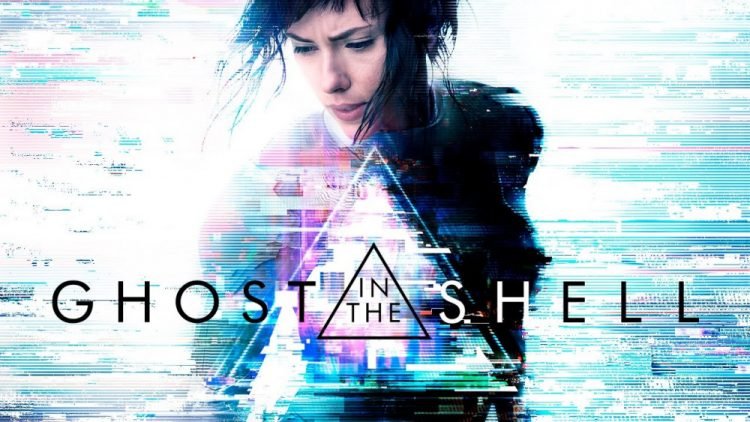Adapting the classic manga or the masterpiece work of anime that Ghost in the Shell is for the big screen would always be a big task. Unfortunately the elephant in the room has tainted a lot of reviews from other websites, but not here at The Outerhaven. While we have touched on these controversies via other articles, I have not allowed such things to influence the way I viewed this version of Ghost in the Shell. So consider this one of the more unbiased, white wash rant free, reviews of Ghost in the Shell out there, leaving this movie to succeed or fail based on it’s own merits. That being said, Ghost in the Shell is a very good adaptation of the base material, but viewed through the eyes of the modern technological era instead of looking forward to what might be.
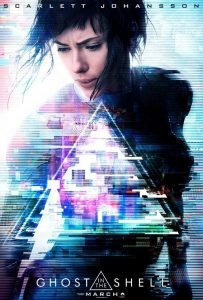 Title: Ghost in the Shell
Title: Ghost in the Shell
Production Company: Paramount Pictures, DreamWorks Pictures, Reliance Entertainment, Amblin Partners & Arad Productions
Distributed by: Paramount Pictures
Screenplay By: Jamie Moss, William Wheeler & Ehren Kruger
Directed by: Rupert Sanders
Produced by: Avi Arad, Ari Arad, Steven Paul & Michael Costigan
Starring: Scarlett Johansson, Michael Pitt, Pilou Asbæk, Chin Han & Juliette Binoche
Based on: Ghost in the Shell manga by Masamune Shirow
Release dates: March 31, 2017 (United States) / March 30, 2017 (Australia)
Running time: 106 minutes
Rating: PG-13 (United States) / M (Australia)
Ghost in the Shell is the story of Mira Killian, the survivor of a terrorist attack on a boat taking her and her family to Japan (Yeah, the country isn’t mentioned specifically, but for the sake of things let’s call it Japan)… Kinda. Unfortunately her body didn’t make it, so her mind is transplanted into a cyborg “shell” body. Once she awakens, she is sent by the body’s creators, Henka Corp, to go serve with the Government run Security Police Section 9.
Fast Forward to a year later and Section 9 stumbles upon a hacking plot by the cyber criminal called Kuze. During the investigation, Mira is questioning the disconnect between her mind and her body since she is unable to feel anything she touches through the shell she is in. The investigation turns up that Kuze is tracking down and killing Henka Corp staff members that were connected to Project 2571. Mira eventually confronts Kuze face to face after deep diving into the memories of the Geisha robot used in a previous hacking attempt. Kuze explains to Mira that she, along with himself and others were all a part of Project 2571 and all of them had their pasts erased from them and new memories implanted in them.
Mira goes off the grid and begins looking into her own past as well as Project 2571 while Dr Cutter, the head of Henka Corp and Project 2571, frames Mira with the death of the project’s lead designer (and Mira’s friend) Dr. Ouélet. Before her death, Dr. Ouélet gives Mira an apartment key saying that it will lead Mira to her past. When Mira goes to the apartment, she meets a woman there who explains about her child Motoko, who died a year ago. Using information from the woman, Mira is able to locate a place that she remembers in the form of a glitch in her visual systems; where she is reunited with Kuze and they both discover that they were run away children named Motoko & Hideo. Private Security from Henka arrive and take down Kuze & Mira, but not before Mira can be saved by Batou.
The ending of Ghost in the Shell sees Dr Cutter killed under overs of Section 9‘s chief, Mira remembering her past as Motoko and reuniting with her mother (the woman from the apartment) and continuing her role in Section 9.
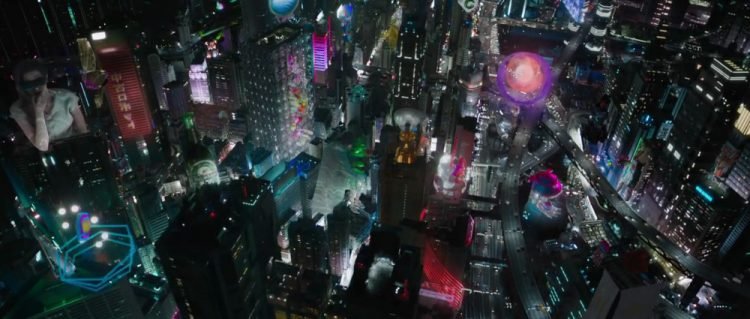
Ghost in the Shell is an interesting remix of the 1995 anime original. Back when Ghost in the Shell was written and then adapted into anime form, we were in an age where we thought the future would be Artificial Intelligence, leading to the idea of what would happen when a computer program became self aware enough to want to experience humanity. In this version of Ghost in the Shell, we more get to look at the disconnect of human feelings brought on by technology in the Internet age. While everyone in the world is connected, Mira doesn’t feel any of it thanks to the changes in her mind due to reprogramming and also physically in her fully cyborg body. Story wise, while not being 100% faithful to the original manga/anime, it feels like a more believable and modern take on the same story from a different perspective. The modifications to changes to the scenes lifted from the anime have been done so in order to fit this new narrative, and to also leave the viewer with a more open to personal interpretation of the story. It’s a lot faster paced for the most part, cutting down on the dialogue heavy scenes from the anime in favor of getting to the action beats quicker to break up the pacing better.
Visually this is AMAZING. Everything feels like a large living world in both a digital and personal sense. The landscape is littered with holograms on every street, giving people something different to see each scene without distracting too much from the main focus. The use of CGI and wire work during the action scenes blend seamlessly together, creating some of the most faithful animation to love action moments ever put to film. From the Thermal-Optic Camouflage Mira uses a lot in the film to the way they blend technology and flesh with Batou’s eyes and also Kuze’s whole body is amazing. I cannot praise Ghost in the Shell enough for recreating the visuals from the amazing anime to near perfection.
If there was anything that this version of Ghost in the Shell improved upon, it’s the characters. Mira for the most part starting as a blank shell that discovers herself more as the film goes on was a great choice. This created a better connection between viewer and character as you go through the story. You feel the weight of Mira’s past as she discovers it herself, making for more dramatic moments in the third act. Another example is Batou. We see Batou and learn more about him before his accident that gives him the cyborg eyes we know from the original, again creating a better connection between viewer and character. Other then that, a lot of the base of the characters remains unchanged from the anime, which is why I’m not talking about it in depth like I usually world.
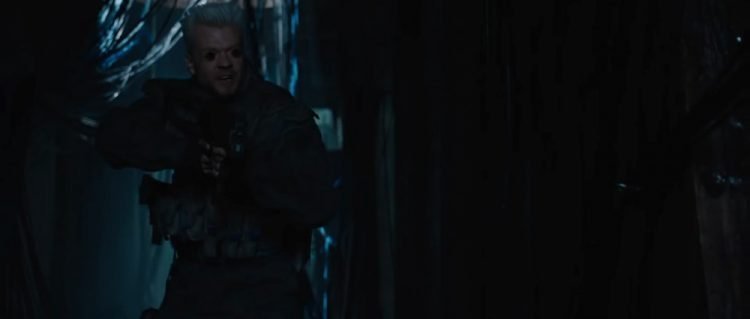
Alright, alright, let’s get the Elephant in the room out of the way first of all. Yes, a majority of the characters in Ghost in the Shell speak English with only one speaking Japanese. As a fan of Takeshi “Beat” Kitano from his Battle Royale days (Seriously, a really good movie. Go see that!) I know that his English is very poor and labored at best, so keeping him as the only one to speak Japanese is fine. However it does draw that whole “White washing” issue and brings it forward. It’s unfortunate that they don’t spell out in the beginning that the Japan we see in Ghost in the Shell is one of the most diverse places of the time. There are people from all races, genders, gender identity, sexuality, etc all seen on screen doing their thing like it was totally normal (It’s mentioned a bit in the film and also visually. Example is one scene where Batou goes into a bathroom and notices a cybernetic enhanced woman peeing into the urinal next to him and doesn’t even change his expression). All they really needed to fix this issue was put something in the beginning text wall that explained that race, gender, religion, etc are all intertwined during this era.
If there was anything else that would be seen as a negative about Ghost in the Shell it would be the musical score. While it is a good modern take on the original 1995 score, it just doesn’t hold the same weight as the original. Topping it off that the first thing you hear when the credits roll is the 1995 main theme “Making of the Machine” by Kenji Kawai. This felt like a kick in the nuts, a “here’s something for you hardcore nerds” than a homage to the previous version.
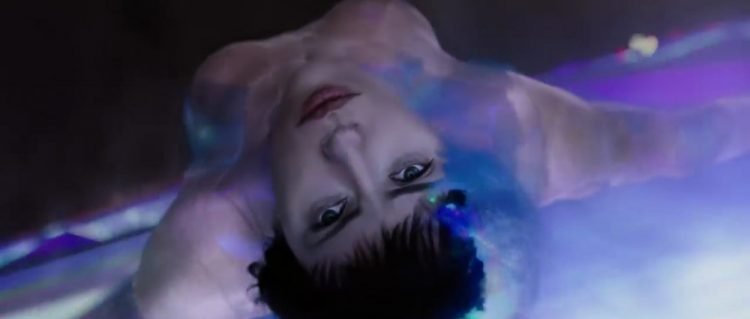
All things said and done, Ghost in the Shell is an amazing adaptation of a classic piece of Japanese media. It does the original manga, along with the 1995 masterpiece anime, justice. It’s a shame that the West is so tainted about the casting that it doesn’t seem to grasp how this film works in the modern age. Ghost in the Shell does stand alongside it’s predecessors and should do so with pride. It’s not perfect, but it’s damn close. It makes me hopeful that once the drama has gone down that we get more adaptations like this in the form of Cowbay Bebop and other classic anime. While I’ll always recommend watching the 1995 original after you see this, I can happily recommend this version of Ghost in the Shell to audiences who might not understand the nature of Japanese anime movies.
Amazing update to an Anime Masterpiece
Summary
Once you get past the drama that casting has caused, you’ll find an interesting take on the disconnect between human feelings that has been brought on by technological advancement. Ghost in the Shell is almost the same story that you might already know, but updated to reflect current year. This is the version of Ghost in the Shell that you can show to people who don’t want the heavy psychology but keeps the amazing visuals of the original.


